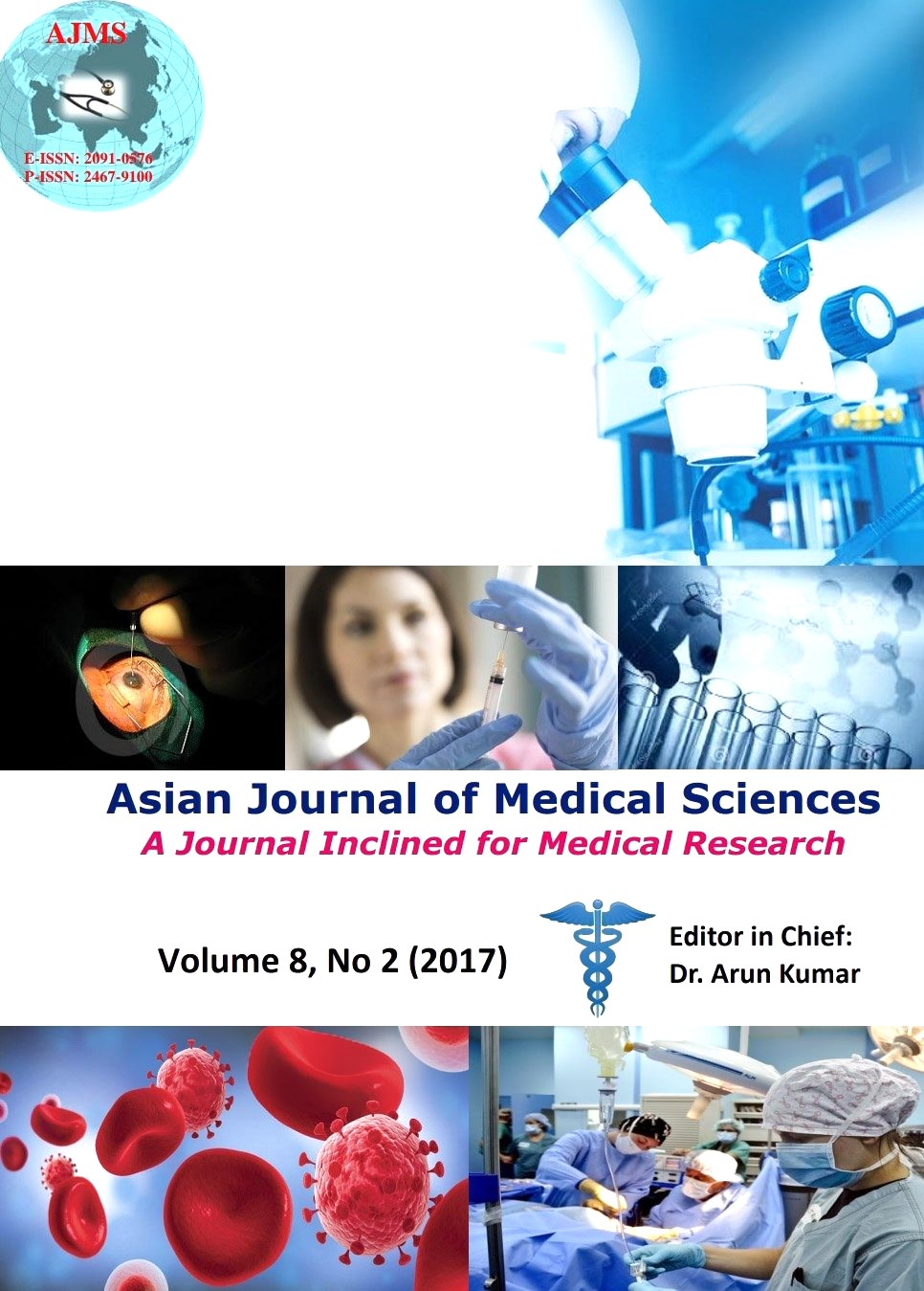Leukocyte count and C reactive protein as diagnostic factors in febrile convulsion
Keywords:
Seizures, febrile, C reactive protein, LeukocytosisAbstract
Background: Febrile convulsion (FC) is the most common seizure disorder in childhood. White blood cell (WBC) and C reactive protein (CRP) are commonly measured in FC. Add a paragraph on Aims and Objectives of the study.
Aims and Objectives: To compare WBC and CRP in febrile children, aged 6 months to five years, with and without FC, in order to determine whether leukocytosis and elevated CRP can be used as diagnostic tool for febrile seizure.
Materials and Methods: In this cross sectional study 214 children (112 with FC), aged 6 months to 5 years, admitted to in the first 48 hours of their febrile disease, either with or without seizure, were evaluated over a 12 months period. Age, sex, temperature; WBC, CRP and hemoglobin were recorded in all children. There was a significant increase of WBC (P<0.001) in children with FC so we can deduct that leukocytosis encountered in children with FC can be due to convulsion in itself.
Results: When comparing FC and non-FC children, we encountered a significant increase of WBC (P =0.0005) in children with FC, measured at the time of admission to pediatric medicine ward. There was no significant difference regarding CRP between the two groups. In fact, elevated CRP is a result of underlying pathology.
Conclusion: In stable patients, if there’s no reason to suspect a bacterial infection or who don’t have any indication of lumbar puncture, there’s no need to assess WBC as an indicator of underlying infection. Any child with febrile seizure with a high CRP value should be evaluated for infection.
Asian Journal of Medical Sciences Vol.8(2) 2017 56-58
Downloads
Downloads
Additional Files
Published
How to Cite
Issue
Section
License
Authors who publish with this journal agree to the following terms:
- The journal holds copyright and publishes the work under a Creative Commons CC-BY-NC license that permits use, distribution and reprduction in any medium, provided the original work is properly cited and is not used for commercial purposes. The journal should be recognised as the original publisher of this work.
- Authors are able to enter into separate, additional contractual arrangements for the non-exclusive distribution of the journal's published version of the work (e.g., post it to an institutional repository or publish it in a book), with an acknowledgement of its initial publication in this journal.
- Authors are permitted and encouraged to post their work online (e.g., in institutional repositories or on their website) prior to and during the submission process, as it can lead to productive exchanges, as well as earlier and greater citation of published work (See The Effect of Open Access).




